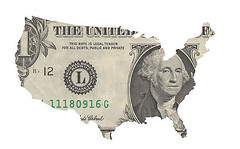
PREV ARTICLE
NEXT ARTICLE
FULL ISSUE
PREV FULL ISSUE
ARTICLE: WHEN MONEY BROUGHT US TOGETHERDick Johnson writes: There's a long, long article headlined "When Money Brought Us Together" by history professor Stephen Mihm in today's Boston Globe He tells of conditions in early America and draws the conclusion that you need to unify people before having a currency. That is why the Euro is not achieving the intended purpose of unifying people in Eurozone countries. Interesting article, albeit economic.
I saw this article, too. It's a nice summary of the issues. Here are some excerpts.
-Editor
All of this threatens to deliver a crippling blow to Europe, with grave repercussions for the broader global economy. But the more immediate casualty of the ongoing crisis is the optimism at the root of the euro itself - the belief that the nations of Europe might move beyond their history of internecine strife by uniting under the banner of a common currency. That belief now seems naive to many people. And the very notion that disparate nations might be brought together by a single currency looks increasingly absurd. But currency unions have a deeper history then just the euro, and a look at their record over time suggests that currency unions have, indeed, worked. In fact, we're living in one: The dollar is itself the product of a long struggle to unite America's states and businesses under a single currency. America's road to the unified dollar was not easy, and its early struggle, never mind the long history of failed attempts to stretch other currency unions beyond national borders, offers a sobering lesson for euro-optimists. This is not to suggest that the euro project is doomed. It is, however, a problematic idea. It is one thing to create a currency union within national borders; it is a very different matter to argue that a shared currency can unite people across them. Officially speaking, the American dollar was born even before the Constitution was signed. But the actual money supply of the young United States was far from uniform. Anyone doing business here in America's first few decades would have encountered thousands of different notes issued by private banks. These were usually redeemed not in dollars issued by the United States mint, but in silver coins from places like Mexico and Bolivia. Travelers also found that merchants and storekeepers often reckoned prices not in dollars and cents, but in local versions of pounds and shillings that varied in value from place to place. European visitors to the United States frequently commented on the heterogeneity of the new nation's money.
To read the complete article, see:
When money brought us together
(www.boston.com/bostonglobe/ideas/articles/2011/08/14/ The Numismatic Bibliomania Society is a non-profit organization promoting numismatic literature. See our web site at coinbooks.org. To submit items for publication in The E-Sylum, write to the Editor at this address: whomren@gmail.com To subscribe go to: https://my.binhost.com/lists/listinfo/esylum All Rights Reserved. NBS Home Page Contact the NBS webmaster 
|
